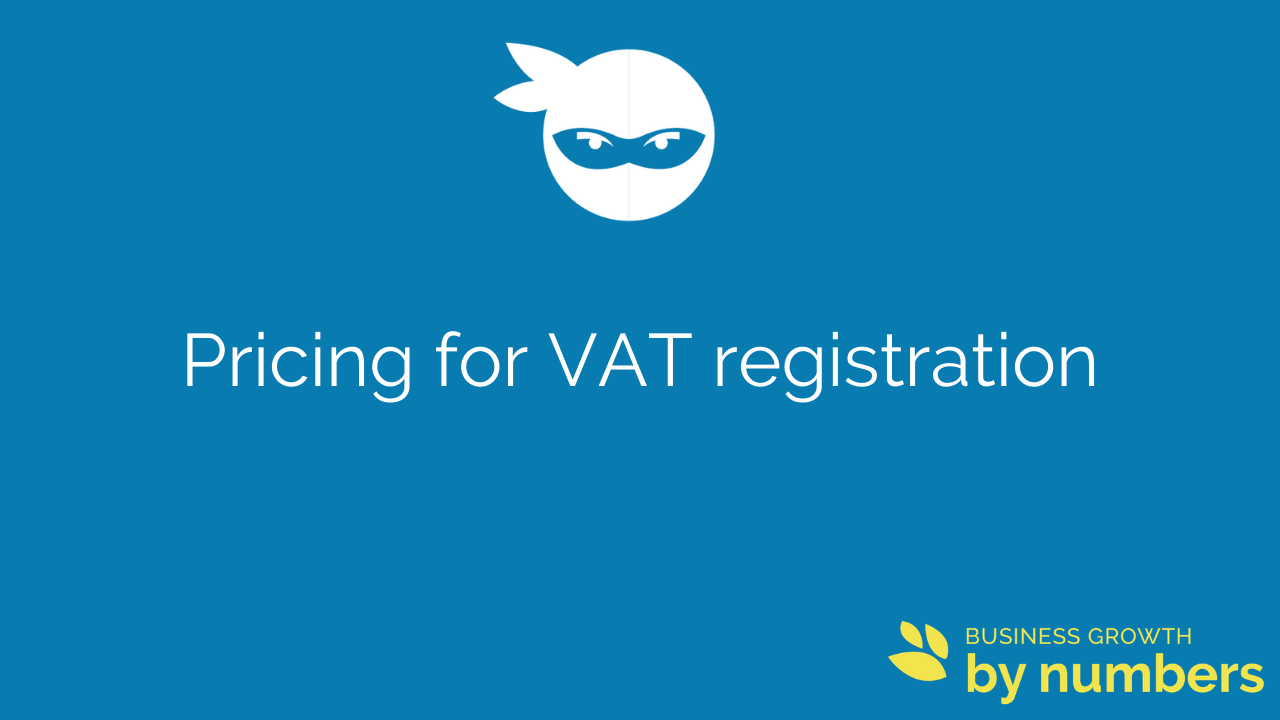Pricing for VAT registration

It’s safe to say that most businesses want to be financially successful. I’m sure there are many who want to be earning more than £85k per year, right? Well, not necessarily. There are an awful lot of businesses that want to avoid getting near that figure - simply because it’s the threshold for VAT registration!
Don’t want to pay VAT? That’s understandable, but having that artificial ceiling in place is stopping you growing your business further.
So it’s time to stop letting that artificial ceiling stop you. It’s time to realise that paying more tax is a good thing - and here’s how you can pave the way for that transition into VAT registration.
Start increasing your prices before you hit the VAT registration threshold
Look ahead and start increasing your prices. This is especially relevant if you are a B2C (consumer) business or are a business that sells to people who are not VAT registered. Most B2B (selling to businesses) customers will expect you to add VAT to your prices and they’re more than happy to pay it, as they’re going to claim it back in their VAT return.
However, B2C customers will see an increase in price, once you add VAT on. By increasing your prices before you register for VAT, you can look to absorb the VAT within that price rise. You can then quote a separate ‘exclusive of VAT’ price, if anyone needs a VAT invoice for business purposes.
If you need a little help with pricing, check out Pricing help: don’t price by the hour and Pricing blog posts.
Know your business numbers
In preparation for VAT registration, it’s also a good idea to know your business numbers.
Notice how much VAT you’re paying on the goods and services you buy. This is something you can claim back, once you’re VAT registered. Also pay attention to your turnover, so you know when you’re getting near the stage where you need to register for VAT. And know your cash flow figures. This will help you understand your turnover, hourly rate of your business, and it’s general financial health. You’ll then know how much profit you’re making, as well as how much you need to put away for your tax and VAT.
Everything has VAT on it, you can’t choose
Value Added Tax is charged on most goods or services in the UK. So if you’re buying things for your business, you’re paying VAT on them. However, when it comes to charging your clients, you can’t charge VAT unless you’re a VAT registered business. Your price is as is.
As a VAT registered business, you have to add VAT to all of your products and services. You need to clearly show whether your prices include VAT (you’re paying the VAT on them), or exclude VAT (you add it to the price you’re charging a client).
Most businesses want to be financially successful. Just because you’re getting near the £85k threshold, you shouldn’t let that hold you back. Paying taxes is a part of business life and it’s a sign of a healthy business. So instead of fearing that VAT registration artificial ceiling, embrace it. Take it as a good sign and be happy your business is growing as well as it is.
Understanding, recording and paying VAT can be incredibly overwhelming for many business owners. But it doesn’t have to be! I want you to stop being scared of the numbers in your business, and instead use them to focus your attention on the most profitable areas, cut costs where you can, and ultimately, grow your business to the level you want it to. If you’d like to learn how to make your business finances a lot easier to understand and manage, check out my Becoming a Numbers Ninja course - you’ll find all the details here.
